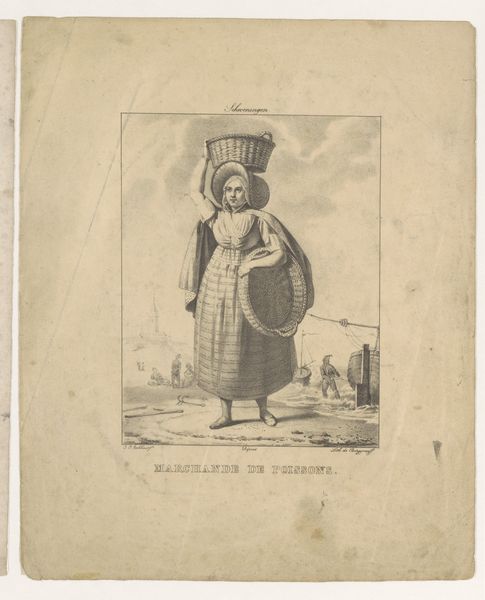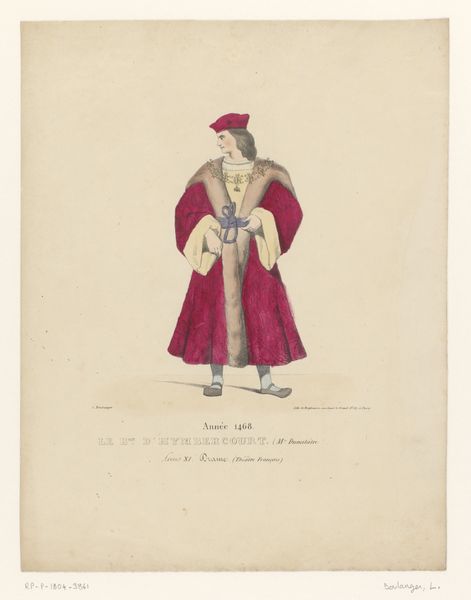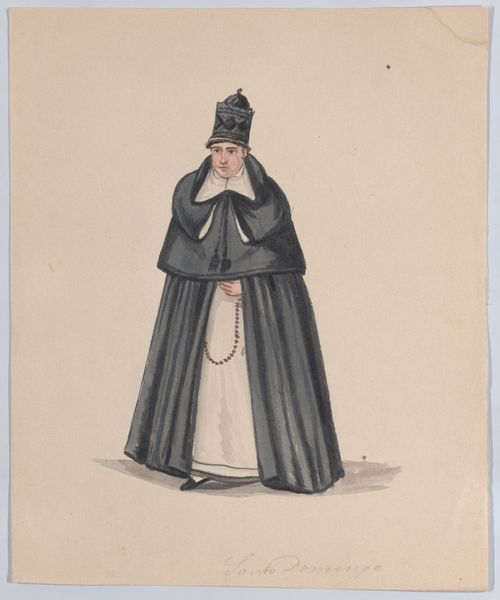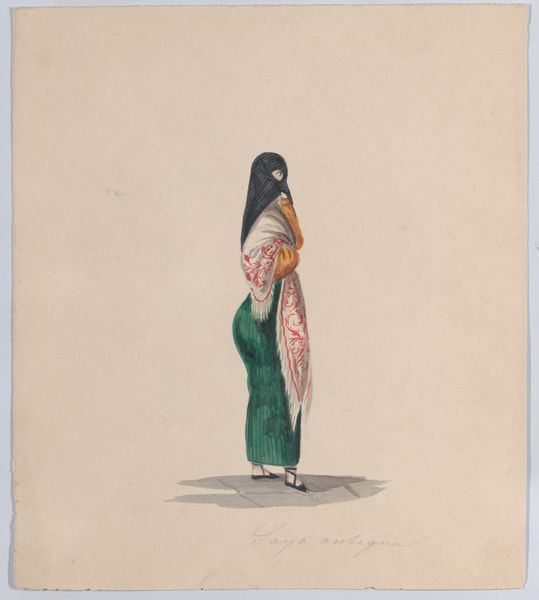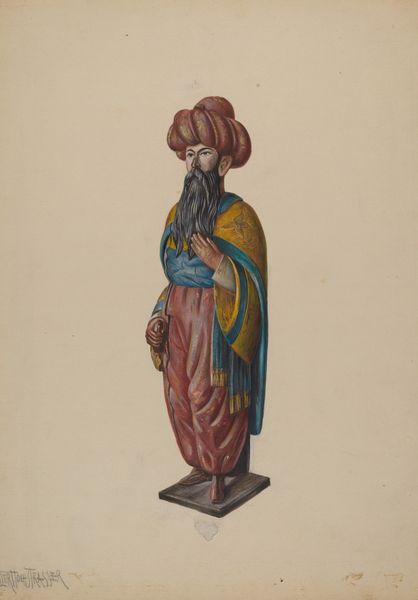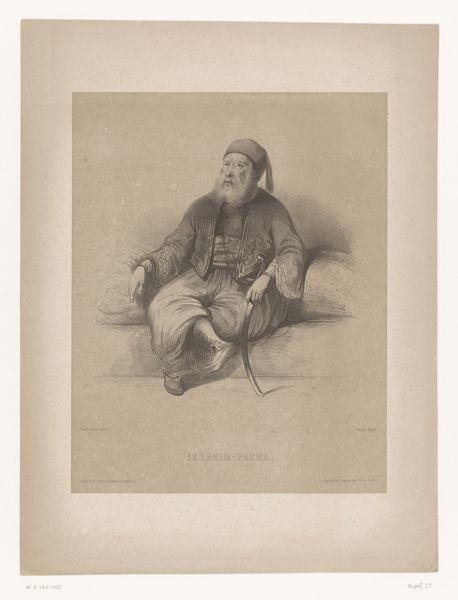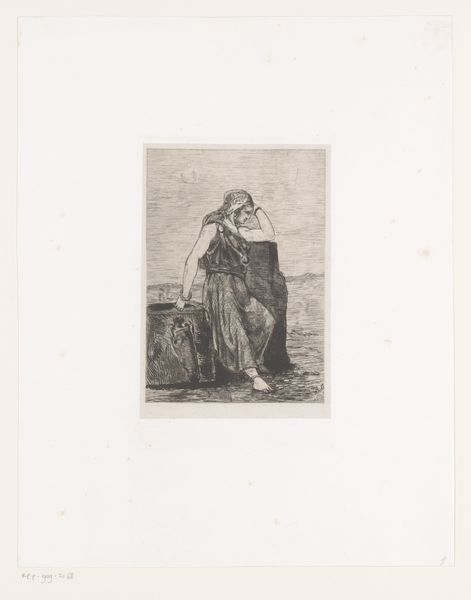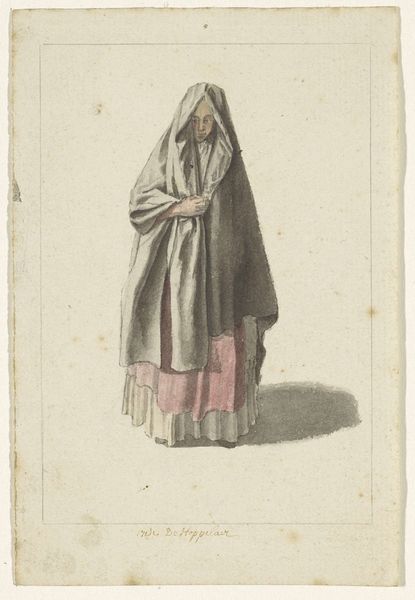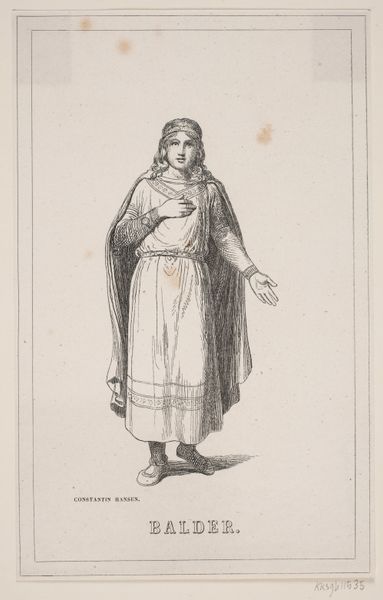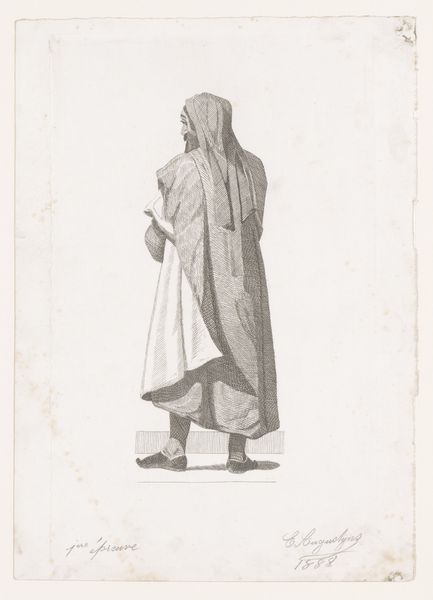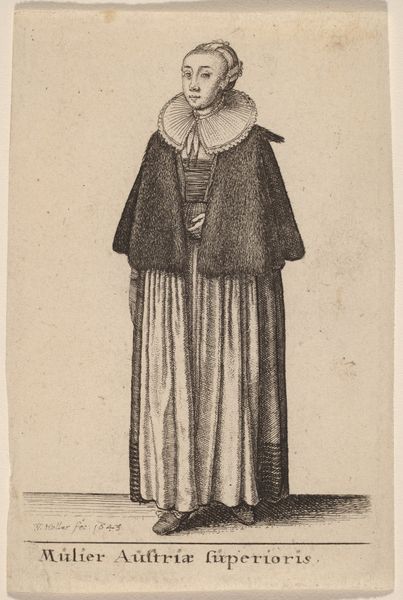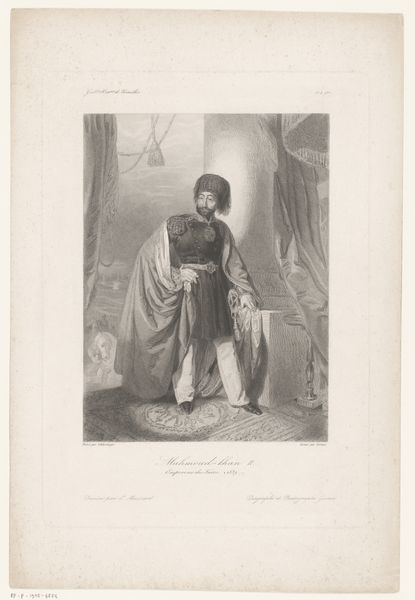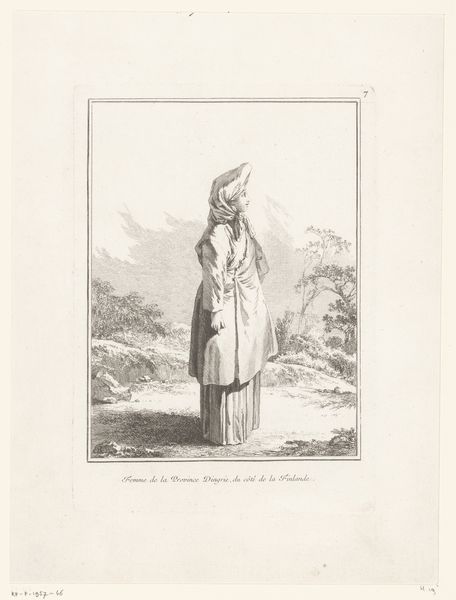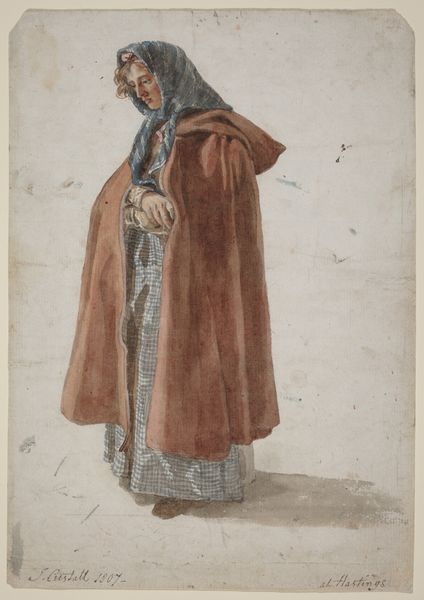
Kostuum van de astroloog Galeotti Martivalle uit het drama Louis XI à Péronne 1826
0:00
0:00
watercolor
#
portrait
#
figuration
#
watercolor
#
romanticism
#
watercolour illustration
#
history-painting
#
watercolor
Dimensions: height 341 mm, width 273 mm
Copyright: Rijks Museum: Open Domain
Editor: This watercolour by Louis Boulanger, dating from 1826, depicts the costume of the astrologer Galeotti Martivalle. There's a real sense of theatricality here, even in just a simple full-length portrait. What strikes you about how this historical figure is presented? Curator: Well, the romanticised view of history during the 19th century certainly shaped its reception. Consider how this image operates within the world of theatre design. It's not just a costume; it represents an understanding – or rather, an imagining – of the past. The subject holds a prominent red book and wears fur lining on their robe. The image seems to communicate status, but it has a purpose, don’t you agree? Editor: Yes, absolutely. He does look rather imposing and self-assured, like he knows a lot about, well, something, as he’s gazing slightly to the left, past us. And yes, it makes sense that it's related to the drama. What kind of influence might theater or public dramas have on art or vice versa at that time? Curator: Theatre at this time wasn’t only entertainment; it was public spectacle and a vehicle for historical interpretation. Artists like Boulanger contributed to how these stories were visually consumed. The public then developed ideas and opinions influenced by those visual representations of Galeotti. Are we learning about him as a historical figure, or only through the interpretation that the drama and illustration gave us? Editor: That's a good question! It makes me think about how costume design isn't just about clothing, but also about communicating a specific idea of a character. And of course, there are choices. Did Galeotti Martivalle really look like that or is it an imaginative, effective rendition of an astrologer? Curator: Exactly! And these choices reveal a lot about the period's cultural values and how history was being reshaped and re-presented to serve various socio-political agendas. It challenges us to investigate whose story is really being told, and for what purpose. Editor: Thanks for shedding light on this; I hadn’t thought about it in those terms before. I will never look at an illustration in the same way.
Comments
No comments
Be the first to comment and join the conversation on the ultimate creative platform.
